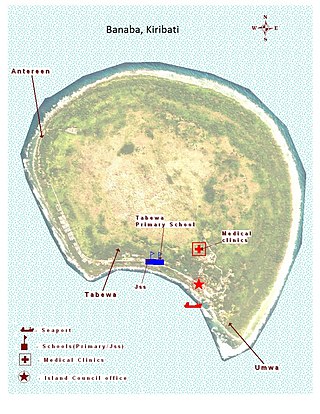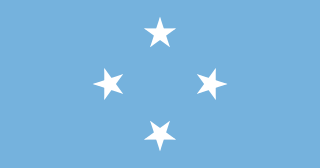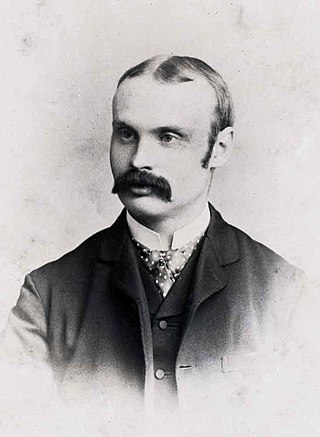Related Research Articles

Kiribati, officially the Republic of Kiribati, is an island country in the Micronesia subregion of Oceania in the central Pacific Ocean. Its permanent population is over 119,000 as of the 2020 census, with more than half living on Tarawa atoll. The state comprises 32 atolls and one remote raised coral island, Banaba. Its total land area is 811 km2 (313 sq mi) dispersed over 3,441,810 km2 (1,328,890 sq mi) of ocean.

The islands which now form the Republic of Kiribati have been inhabited for at least seven hundred years, and possibly much longer. The initial Austronesian peoples’ population, which remains the overwhelming majority today, was visited by Polynesian and Melanesian invaders before the first European sailors visited the islands in the 17th century. For much of the subsequent period, the main island chain, the Gilbert Islands, was ruled as part of the British Empire. The country gained its independence in 1979 and has since been known as Kiribati.

The Gilbert Islands are a chain of sixteen atolls and coral islands in the Pacific Ocean, about halfway between Papua New Guinea and Hawaii. They constitute the main part of the nation of Kiribati.

The Gilbert and Ellice Islands in the Pacific Ocean were part of the British Empire from 1892 to 1976. They were a protectorate from 1892 to 12 January 1916, and then a colony until 1 January 1976, and were administered as part of the British Western Pacific Territories (BWPT) until they became independent. The history of GEIC was mainly characterized by phosphate mining on Ocean Island. In October 1975, these islands were divided by force of law into two separate colonies, and they became independent nations shortly thereafter: the Ellice Islands became Tuvalu in 1978, and the Gilbert Islands became part of Kiribati in 1979.

Tabuaeran, also known as Fanning Island, is an atoll that is part of the Line Islands of the central Pacific Ocean and part of the island nation of Kiribati. The land area is 33.73 square kilometres, and the population in 2015 was 2,315. The maximum elevation is about 3 m (10 ft) above high tide.

Banaba is an island of Kiribati in the Pacific Ocean. A solitary raised coral island west of the Gilbert Island Chain, it is the westernmost point of Kiribati, lying 185 miles (298 km) east of Nauru, which is also its nearest neighbour. It has an area of six square kilometres (2.3 sq mi), and the highest point on the island is also the highest point in Kiribati, at 81 metres (266 ft) in height. Along with Nauru and Makatea, it is one of the important elevated phosphate-rich islands of the Pacific.

Butaritari is an atoll in the Pacific Ocean island nation of Kiribati. The atoll is roughly four-sided. The south and southeast portion of the atoll comprises a nearly continuous islet. The atoll reef is continuous but almost without islets along the north side. Bikati and Bikatieta islets occupy a corner of the reef at the extreme northwest tip of the atoll. Small islets are found on reef sections between channels on the west side. The lagoon of Butaritari is deep and can accommodate large ships, though the entrance passages are relatively narrow. It is the most fertile of the Gilbert Islands, with relatively good soils and high rainfall. Butaritari atoll has a land area of 13.49 km2 (5.21 sq mi) and a population of 3,224 as of 2015. During World War II, Butaritari was known by United States Armed Forces as Makin Atoll, and was the site of the Battle of Makin. Locally, Makin is the name of a separate but closest atoll, 3 kilometres to the northeast of Butaritari, but close enough to be seen. These two atolls share a dialect of the Gilbertese language.

Gilbertese or taetae ni Kiribati, also Kiribati, is an Austronesian language spoken mainly in Kiribati. It belongs to the Micronesian branch of the Oceanic languages.

Ieremia Tienang Tabai is an I-Kiribati politician who served as the first president of Kiribati, after being the youngest ever chief minister of the Commonwealth of Nations and then becoming the youngest ever head of State. During his presidency, he was described as being the most able leader of the Pacific island states.

The Phoenix Islands Settlement Scheme was begun in 1938 in the western Pacific Ocean and was the last attempt at human colonisation within the British Empire.
Rabi is a volcanic island in northern Fiji. It is an outlier to Taveuni, in the Vanua Levu Group. It covers an area of 66.3 square kilometers, reaching a maximum elevation of 463 meters and has a shoreline of 46.2 kilometers. With a population of around 5,000, Rabi is home to the Banabans who are the indigenous landowners of Ocean Island; the indigenous Fijian community that formerly lived on Rabi was moved to Taveuni after the island was purchased by the British government. The original inhabitants still maintain their links to the island, and still use the Rabi name in national competitions.

The British Western Pacific Territories (BWPT) was a colonial entity created in 1877 for the administration of a series of Pacific islands in Oceania under a single representative of the British Crown, styled the High Commissioner for the Western Pacific. Except for Fiji and the Solomon Islands, most of these colonial possessions were relatively minor.

Nikunau is a low coral atoll in the Gilbert Islands that forms a council district of the Republic of Kiribati. It consists of two parts, with the larger in the northwest, joined by an isthmus about 150 metres (490 ft) wide.

Makin is the name of an atoll, chain of islands, located in the Pacific Ocean island nation of Kiribati. Makin is the northernmost of the Gilbert Islands, with a population of 1,990.

Japanese Micronesians, also Nikkei Micronesians or Micronesians of Japanese descent, refers to citizens of the Federated States of Micronesia (FSM) who are of Japanese descent and are members of the Japanese global diaspora known as the Nikkei (日系).
Large-scale Japanese settlement in Micronesia occurred in the first half of the 20th century when Imperial Japan colonised much of Micronesia.
Japanese settlement in the Marshall Islands was spurred on by Japanese trade in the Pacific region. The first Japanese explorers arrived in the Marshall Islands in the late 19th century, although permanent settlements were not established until the 1920s. As compared to other Micronesian islands in the South Seas Mandate, there were fewer Japanese who settled in the islands. After the Japanese surrender in 1945, the Japanese populace were repatriated to Japan, although people of mixed Japanese–Marshallese heritage remained behind. They form a sizeable minority in the Marshall Islands' populace, and are well represented in the corporate, public and political sectors in the country.
Mori Koben was a Japanese businessman and adventurer, who was best remembered as one of the first Japanese pioneers in Micronesia. As a young man, Mori migrated from Japan to Chuuk, where he helped to establish Japanese businesses in Micronesia. Mori's guidance and direction helped to expand Japanese business interests throughout Micronesia during the Spanish and German colonial-era. After Japan annexed Micronesia from Germany in 1914, Mori was hired as an adviser to the Japanese administration in the South Seas Mandate, and was instrumental in encouraging Japanese settlement in Micronesia. In his final years during World War II, Mori facilitated Micronesian support in the Japanese war efforts, but was already suffering from failing health from old age. He died within a few days after the Japanese surrender, and a sizeable minority of Micronesians with Japanese ancestry from Chuuk trace their ancestry back to Mori.
Chinese have been settling in Palau in small numbers since the 19th century. The early settlers consisted of traders and labourers, and often intermarried with Palauan women. Their offspring quickly assimilated with the local populace and generally identify themselves as Palauan. In recent years, Palau has seen a growing expatriate business community from Taiwan, after Palau established formal diplomatic ties with Taiwan in 1999.

Fredrick George Whibley (1855–1919) abandoned a career as clerk in a London bank to escape from the constraints and social expectations of respectability in the Victorian era. He ended up as a copra trader on Niutao in the [[Tuvalu]|Ellice Islands]] in the central Pacific Ocean.
References
- ↑ 第5回 太平洋・島サミット開催! [ permanent dead link ], Plaza for International Cooperation, Official Development Assistance, Office of the Ministry of Foreign Affairs, Japan, retrieved October 17, 2009
- 1 2 Crocombe (2007), p. 54
- ↑ MacDonald (2002), p. 116-7
- ↑ McQuarrie (2000), p. 6
- 1 2 McQuarrie (2000), p. 7
- ↑ MacDonald (2002), p. 145
- ↑ Crocombe (2001), p. 433
- ↑ McQuarrie (2000), p. 63
- ↑ Crocombe (2001), p. 51
- ↑ United Nations ESCAP (2009), p. 58
- ↑ Kiribati-Japan Relations From a “Nikkei” I-Kiribati Perspective, Kentaro Ono, November 17, 2003, IIST World Forum